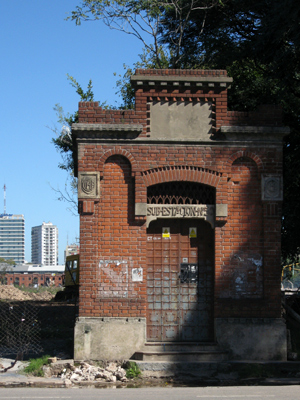
The smallest scale CIAE structures designed by Juan Chiogna are nothing more than decorative boxes. Transformer substations were needed to distribute electricity throughout the city… in order to overcome cable resistance, transformers are used to ramp up the voltage before sending it to substations where it is then converted back to regular voltage for local consumption.
As mentioned previously, the CIAE did not provide electricity for trolleys (the largest consumers in the early 20th century prior to massive industrialization in the 1940s) so substations could be small & located in the neighborhoods they served. The majority are wedged in between residential lots silently disintegrating while people walk by unaware of their existence. Usually on the order of 4 x 6 m, they are frequently abused by their neighbors… painted over, chipped into, or used for graffiti:
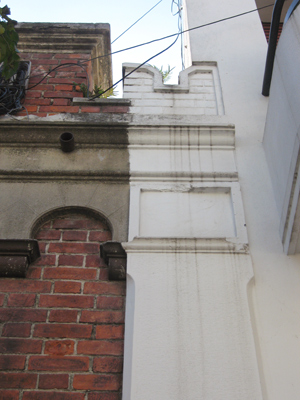
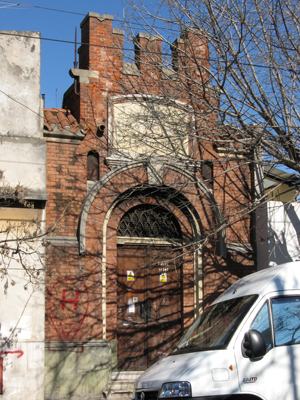
Interesting although fairly repetitive examples are free-standing substations found along the city’s edge with the waterfront, either along the Río de la Plata (Palermo, Puerto Madero) or the Riachuelo (La Boca, Barracas):
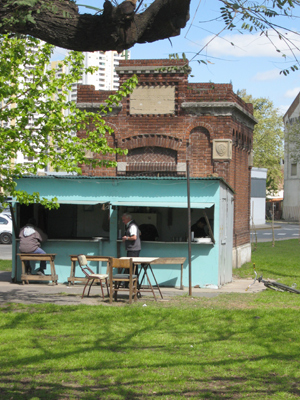
If an attendant was needed, living quarters were built on the premises like at Julián Alvarez & Paraguay (photos below). These are larger than the 4×6 box & a bit more decorative but not on the same scale as the subusinas. An estimated 200 substations once dotted Buenos Aires & its southern suburbs although no official list of remaining structures currently exists:
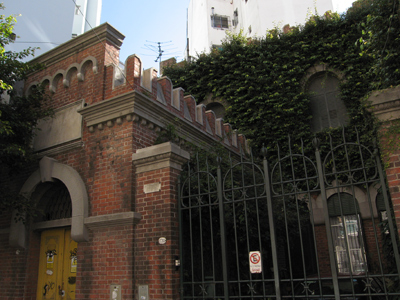
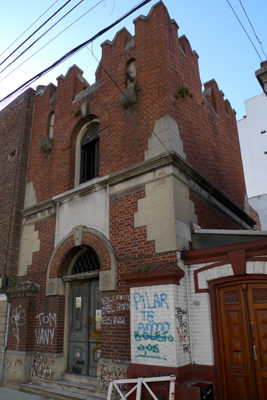
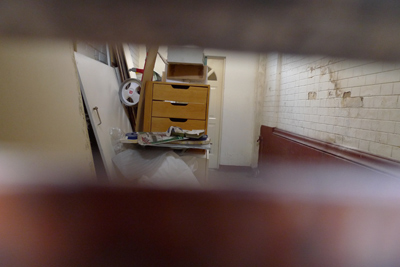
A company report map published in 1931 shows an extensive network throughout the city branching from major generators. The problem with the map is that it is more decorative than informative… Buenos Aires is tilted at an odd angle & exact substation locations are impossible to determine. Surely a list exists in some company archive. In the meantime, they remain to be discovered by anyone walking around Buenos Aires:
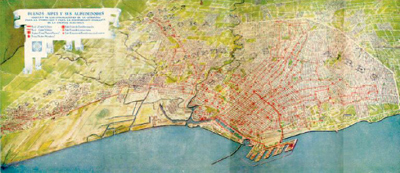
Two noteworthy substations which are more decorative than most are located in Palermo & have mini-towers: Chenaut 1983 & Gorostiaga 1660. Unfortunately the first location has a kiosk blocking the view, & the stained glass in the second location is damaged. But both are unique creations by Chiogna:
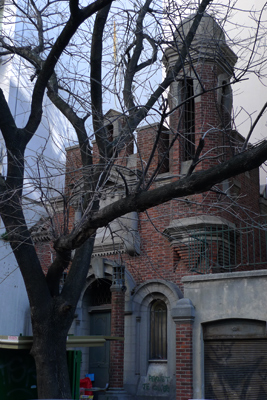
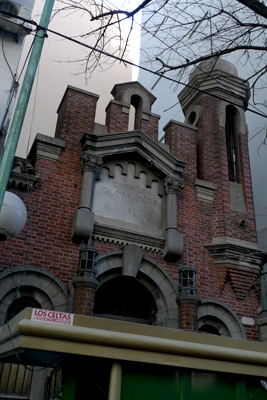
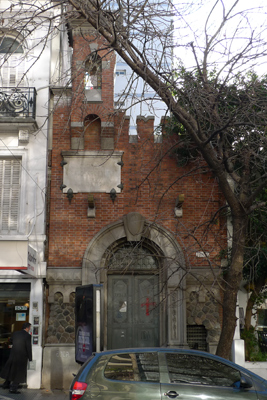
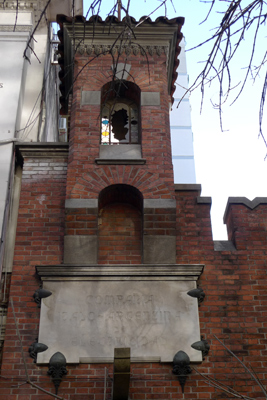
Romanesque Revival remained popular in Buenos Aires through the 1930’s, mainly seen in churches like Alejandro Christophersen’s Basílica Santuario Santa Rosa de Lima (Avenida Belgrano 2208) & J.C. Massa’s Parroquia Tránsito de la Virgen (Perón 3333). Even the central post office as far away as the city of Tucumán followed the trend. Juan Chiogna was not responsible for CIAE architecture during the company’s expansion in the 1930’s. In fact, no attempt was made to maintain the original style, but that’s jumping ahead…
CIAE series: Electricity timeline • Precedent & foundation • Swiss holding companies • Architecture 1 2 3 4 • Expansion • Scandal • Fade to black • Building list • Bibliography